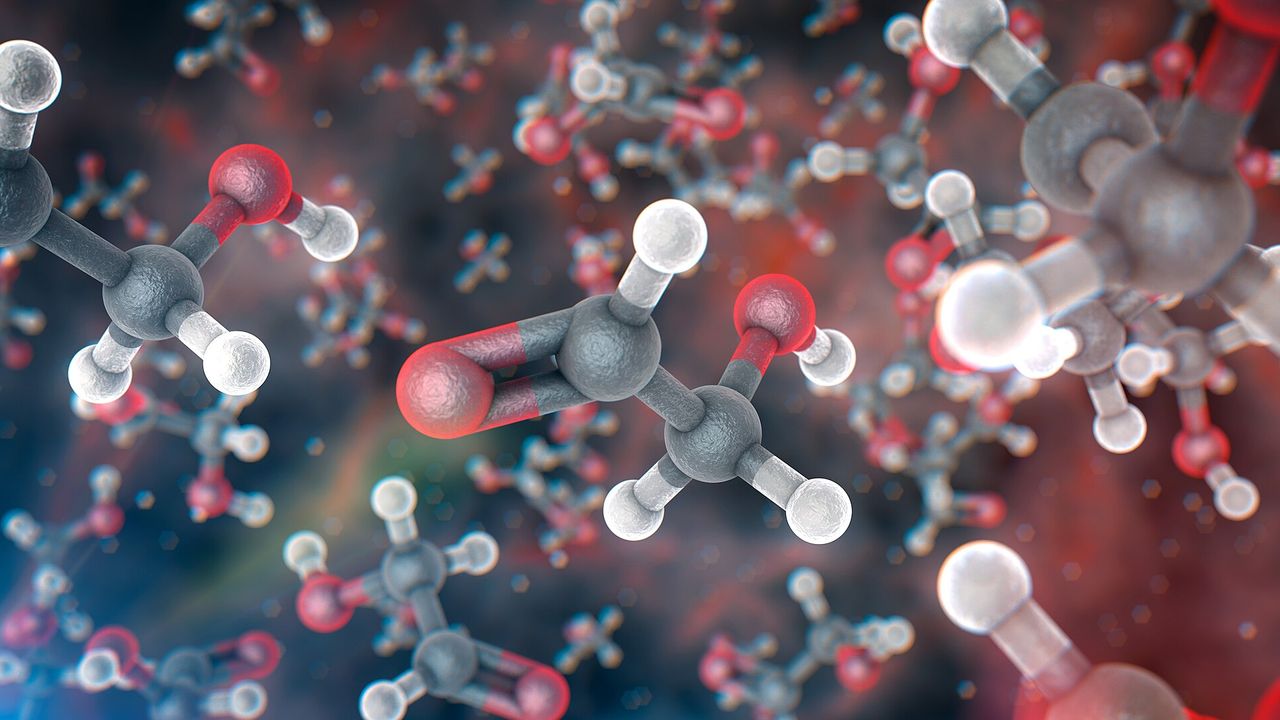Science
New Study Links Space Radiation to Organic Molecules on Enceladus

Recent laboratory research indicates that certain organic molecules detected in plumes from Saturn’s moon Enceladus may result from space radiation rather than originating from the moon’s subsurface ocean. This finding adds complexity to the understanding of these compounds’ astrobiological significance and raises questions about their origins.
Enceladus conceals a vast ocean beneath its icy crust. Eruptions from this liquid reservoir occur through fissures near the moon’s south pole, creating plumes of microscopic ice particles that can reach hundreds of kilometers into space. While much of this material falls back to the surface, some particles enter orbit and contribute to Saturn’s E ring, the planet’s outermost ring. Between 2005 and 2015, NASA’s Cassini spacecraft flew through these plumes, identifying various organic molecules that suggested a chemically rich environment, potentially capable of supporting life.
To explore the influence of space radiation on these findings, a team led by planetary scientist Grace Richards at the National Institute for Astrophysics in Rome created a simulation mimicking Enceladus’s surface conditions. They combined water, carbon dioxide, methane, and ammonia, typical components of the moon’s surface ice, and cooled the mixture to −200°C within a vacuum chamber. The mixture was then bombarded with water ions, a significant aspect of the radiation environment surrounding Enceladus.
This radiation triggered a series of chemical reactions, producing a variety of molecules including carbon monoxide, cyanate, ammonium, and various alcohols, as well as precursors to amino acids like formamide, acetylene, and acetaldehyde. The presence of these molecules suggests that radiation could induce similar reactions on Enceladus.
Richards presented this groundbreaking research at the Europlanet Science Congress in Helsinki, Finland, and published a detailed report in the journal Planetary and Space Science. The implications of this research prompt critical questions regarding the actual sources of organic molecules in Enceladus’s plumes.
The study does not entirely dismiss the possibility of a habitable ocean beneath the ice. Richards emphasizes the need for caution when inferring the ocean’s composition based on observations made in space. “I don’t necessarily think that my experiments discredit anything to do with Enceladus’s habitability,” she stated. Nonetheless, she noted the importance of understanding the various processes that modify the material observed in the plumes, including interactions with the moon’s icy walls and the surrounding environment.
The research findings underscore the necessity for further experiments. Fellow planetary scientist Alexis Bouquet from the French National Centre for Scientific Research highlighted the importance of laboratory simulations for future missions to Enceladus, as well as for interpreting data from ongoing missions to Jupiter’s icy moons, including NASA’s Europa Clipper and the European Space Agency’s JUICE mission.
As Richards’s research questions the origins of organic compounds on Enceladus, additional studies continue to explore the moon’s chemistry. A team led by Nozair Khawaja at the Freie Universität Berlin recently reported the discovery of new types of organic molecules, such as ester and ether groups, from data collected during Cassini’s close flybys. These findings, published in Nature Astronomy, suggest that these molecules could enhance the moon’s habitability potential.
Khawaja’s analysis indicates that complex organic molecules are present in fresh ice grains ejected from Enceladus’s vents. During a flyby in 2008, Cassini approached within 28 kilometers of the moon’s surface. The team theorizes that the ice grains sampled did not spend a significant duration in space, likely only a few minutes, which raises doubts about whether radiation could have sufficiently influenced the organic molecules detected.
The contrasting findings from Richards and Khawaja highlight the intricate chemistry of Enceladus, reinforcing its status as a prime target in the search for extraterrestrial life. Enceladus possesses the three essential components for life: liquid water, an energy source, and a diverse array of chemical elements. Even if the subsurface ocean lies several kilometers beneath the ice, the plumes provide a unique opportunity to sample an extraterrestrial liquid environment.
Plans for a potential ESA mission focused on Enceladus are already in development, which may include high-speed flybys through the plumes and possibly a lander at the south pole. Insights gained from recent studies will inform the design of instrumentation and shape the interpretation of future results.
“There is no better place to look for [life] than Enceladus,” Khawaja asserted, emphasizing the moon’s importance in the ongoing exploration of life’s origins in the universe.
-

 Lifestyle3 months ago
Lifestyle3 months agoLibraries Challenge Rising E-Book Costs Amid Growing Demand
-

 Sports3 months ago
Sports3 months agoTyreek Hill Responds to Tua Tagovailoa’s Comments on Team Dynamics
-

 Sports3 months ago
Sports3 months agoLiverpool Secures Agreement to Sign Young Striker Will Wright
-

 Lifestyle3 months ago
Lifestyle3 months agoSave Your Split Tomatoes: Expert Tips for Gardeners
-

 Lifestyle3 months ago
Lifestyle3 months agoPrincess Beatrice’s Daughter Athena Joins Siblings at London Parade
-

 World3 months ago
World3 months agoWinter Storms Lash New South Wales with Snow, Flood Risks
-

 Science3 months ago
Science3 months agoTrump Administration Moves to Repeal Key Climate Regulation
-

 Business3 months ago
Business3 months agoSoFi Technologies Shares Slip 2% Following Insider Stock Sale
-

 Science2 months ago
Science2 months agoSan Francisco Hosts Unique Contest to Identify “Performative Males”
-

 Science3 months ago
Science3 months agoNew Tool Reveals Link Between Horse Coat Condition and Parasites
-

 Sports3 months ago
Sports3 months agoElon Musk Sculpture Travels From Utah to Yosemite National Park
-

 Science3 months ago
Science3 months agoNew Study Confirms Humans Transported Stonehenge Bluestones









